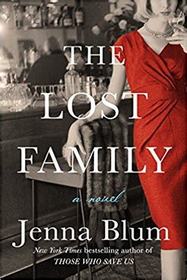Peter has survived the death camps, but his wife and twin girls did not. The story opens when he is the owner/chef of his own restaurant. He meets June, a model. Time moves on. The first third of this book is about him, from his perspective. the second is from Junes, and the third and last part is their daughter's story. I enjoyed the firs part much more than the second two parts. It was still a good, connected story.
This absorbing novel begins in the 1960s. Peter Rashkin, a German-Jewish man and a concentration camp survivor, is a chef and co-owner of a successful restaurant he has named after his wife, Masha, who didn't survive the Holocaust. She and their 3-year old twin daughters were never seen again after being herded by the Nazis during a terror-filled purge. Peter blames himself for their separation, and is plagued by the guilt and loss of his family. He eventually falls in love with, and marries, a much younger woman, June, an internationally-renown model. They have one daughter, Elspeth.
The story is told from the perspectives of Peter, June and Elspeth in separate sections, and revolves around Peter, whose obsession with the past permits him from enjoying the present. The family unit slowly disintegrates with each of the three distancing themselves from the rest with predictably disastrous results and the possibility of unexpected reconciliations. The haunting prose in this novel is evocative of Blum's previous memorable novel, Those Who Save Us.
The story is told from the perspectives of Peter, June and Elspeth in separate sections, and revolves around Peter, whose obsession with the past permits him from enjoying the present. The family unit slowly disintegrates with each of the three distancing themselves from the rest with predictably disastrous results and the possibility of unexpected reconciliations. The haunting prose in this novel is evocative of Blum's previous memorable novel, Those Who Save Us.
Despite the title, this is not a World War II historical fiction book about a Jewish family that is eventually lost to the internment camps. I had thought perhaps the story would flash back more to that time, developing the story as it went. It is rather a contemporary story (1965-1986) about the long term emotional toll of war, dysfunctional marriages, wealthy life, modeling, and eating disorders. You are propelled along the characters' bumpy road of life and may not find a character that you can identify with but it is entertaining although quite dark at times. Perhaps a bit like Tennessee Williams. One should be forewarned that this contains sexual content and adult subject matter, probably not appropriate for young teens.




